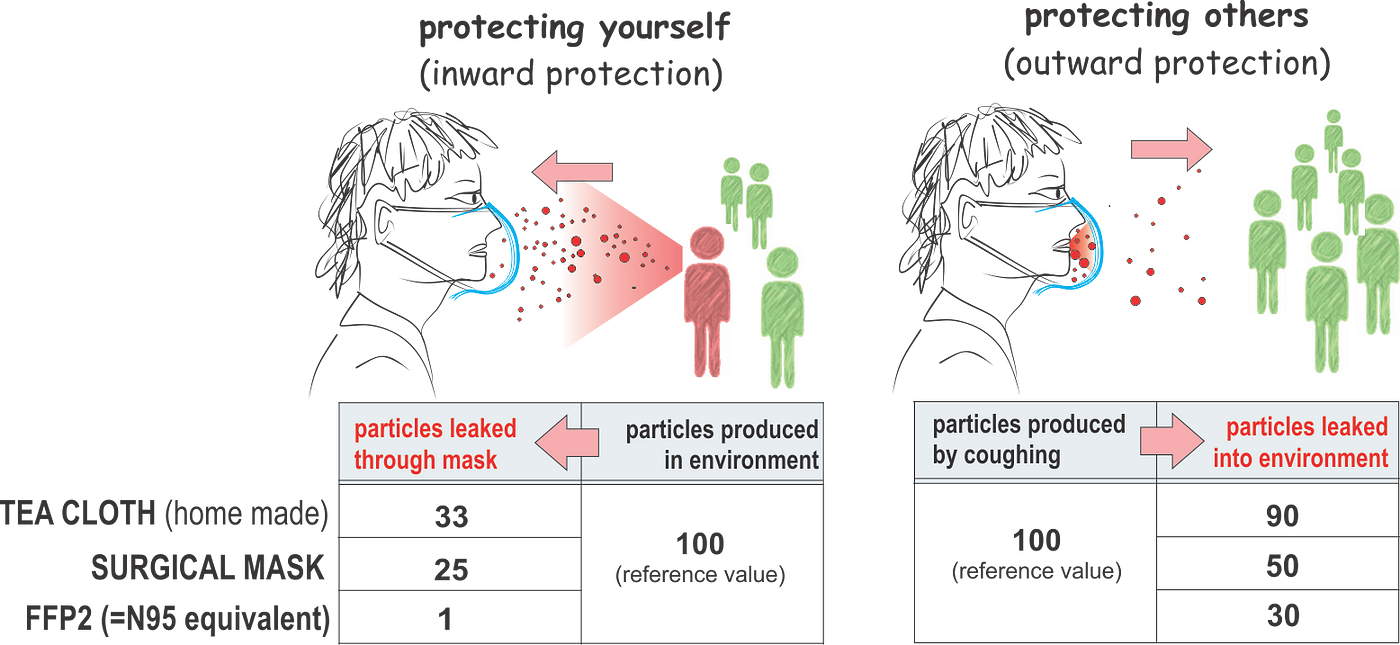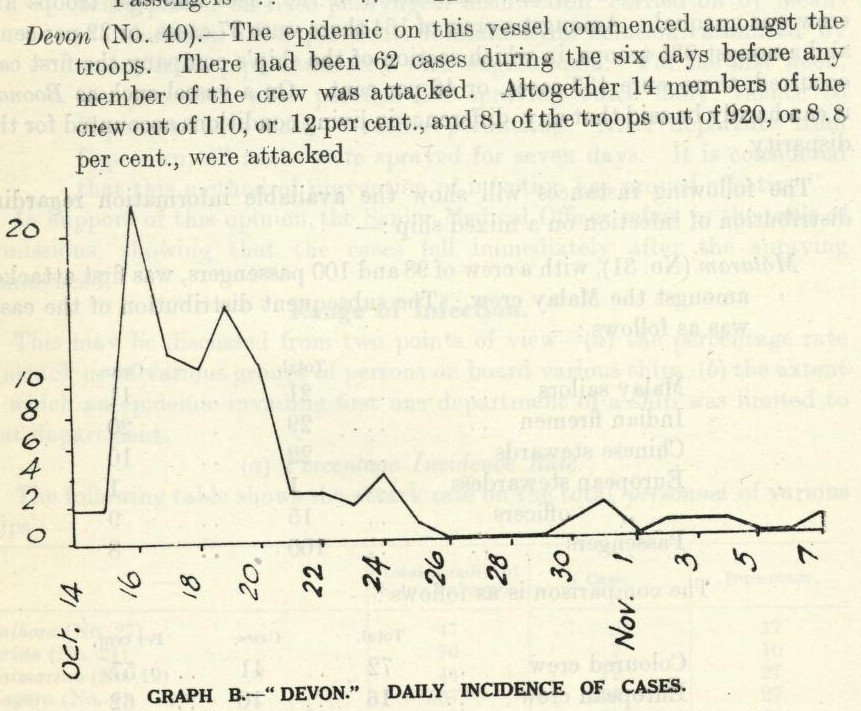Insight
If we can’t maintain social distancing in the transport system, compulsory masks (even cloth ones) in lifts, buses and trains would materially reduce the risk of virus transmission.
As Australia continues to open up, we’ve realised that social distancing is close to impossible in some pretty crucial parts of the transport system – public transport and lifts. This article from a few days ago described the maths that iconic building Australia Square had done to conclude that getting back to full occupancy meant 3 hour waits for the lifts (no chance of going out for a lunch break!). And NSW has said that only 12 people will be allowed on a bus at a time, and 32 people per train carriage in the same week as all children are going back to school, many of them by public transport. But they won’t leave children by the side of the road, so most public transport is likely to end up more crowded than that.
So how to make that work? My view is masks. If we are going to try to keep people apart and socially distanced in crowded places (which seems like a good idea, given we haven’t eliminated the virus), then masks, even home made cloth masks, materially reduce the risk of spreading infection. It is well documented that asymptomatic people can spread the virus (whether they are asymptomatic as they are newly infected, or because they are never going to get sick). So we can’t stop the spread just by asking people to stay home when they are unwell. Superficially well people can spread the virus through talking, particularly loudly, even if they aren’t coughing or sneezing.
What is the evidence?
According to this evidence review paper, which reviews various studies, what you have to believe to suggest masks make sense are:
In order to identify whether public mask wearing is an appropriate policy, we need to consider these questions:
1. Do asymptomatic or presymptomatic patients pose a risk of infecting others?
2. Would a face mask likely decrease the number of people infected by an infectious mask wearer?
3. Are there alternative face covers that will not disrupt the medical supply chain, e.g. homemade cloth masks?
4. Will wearing a mask impact the probability of the wearer becoming infected themselves?
5. Does mask use reduce compliance with other recommended strategies, such as physical distancing and quarantine?
And here in Australia, we should ask one more question – how prevalent is the disease in the community? (ie is there enough infection to make this level of precaution worthwhile?)
- Do asymptomatic patients pose a risk? – Definitely, I have blogged about this before – up to half of all cases are asymptomatic, and, while probably not as infectious as a symptomatic person, still infectious.
- Would a face mask reduce people infected by an infected person? There is evidence (see below) to suggest that even a cloth home made mask will reduce spread by 10% from someone infectious.
- Will we disrupt the medical supply chain? Ideally we would be using surgical masks (not the gold standard, and very uncomfortable N95, but better than cloth), but even cloth masks have a material affect. Surgical masks are back in shops, but still in limited supply. I suspect, though, if we chose, we could do what Taiwan has done and ration them (9 masks per fortnight).
- Will a face mask reduce risk for the wearer? Similarly, even a cloth mask will protect the wearer from an infected person, reducing infection by around 50%
- Does mask reduce other risk mitigation? This is a good question. I think in Australia, people are more likely to go catch public transport if everyone is wearing masks, but potentially the economic damage will be reduced without an increase in overall risk. But the article suggests that the act of wearing masks also makes people more risk aware in general, so it could improve the overall risk position both ways.
- Is the prevalence in the community enough to make the precautions worth while? If we have only had 12 new cases in NSW this week, then even if only half are being identified, there aren’t many infectious people out there. But another way of asking this question is about the cost of the precaution – perhaps increasing facemask use reduces other social distancing measures which would be much more limiting to people and the economy.
The diagram below, based on a Dutch study from 2008, (via this excellent article) shows that if both people are wearing a cloth mask (not even a surgical one), the probability of spread would be reduced by 70% (90% times 33% gives 30%). If both people were wearing surgical masks, then the reduction in spread probability would be around 85%. If we think social distancing is a good idea, but we can’t manage it in crowded places (because putting extra buses and lifts in place is impractical) then making masks compulsory, even home made ones, in those places would materially reduce the risk of another outbreak, particularly as those crowded places make contact tracing difficult.
If you aren’t convinced yet, try this video of a simulation showing how effective mask wearing is in reducing virus transmission. The parameters it uses are between those for cloth masks and surgical masks for the dutch study.
The conclusion from the academic paper is:
The preponderance of evidence indicates that mask wearing reduces the transmissibility per contact by reducing transmission of infected droplets in both laboratory and clinical contexts. Public mask wearing is most effective at stopping spread of the virus when compliance is high. The decreased transmissibility could substantially reduce the death toll and economic impact while the cost of the intervention is low. Thus we recommend the adoption of public cloth mask wearing, as an effective form of source control, in conjunction with existing hygiene, distancing, and contact tracing strategies. We recommend that public officials and governments strongly encourage the use of widespread face masks in public, including the use of appropriate regulation.
Given we have decided to cautiously open up the economy, it seems to me that a sensible way to deal with crowded spaces that are necessary for the opening up is not to pretend they don’t exist, and hope that transmission doesn’t occur there. It’s to ask people to wear masks in those spaces, to keep the spread below 1. Compared to what we are seeing overseas, it is possibly being overly cautious, given how little virus is in the community, but it seems to me that if we can use masks to substitute for the kind of social distancing that is really damaging much of the economy, that would be worth some caution and inconvenience. It wouldn’t be practical to introduce that rule on Monday, as schools go back, but it does make sense to get ready for it if the number of cases ticks up even a little.
Link
This article in the Conversation draws some fascinating parallels between the Spanish Flu in Australia in 1919, and Covid19 exactly 101 years later, particularly around mask wearing and relations between the states.
Acting quickly, in late January, the NSW government ordered “everyone shall wear a mask,” while all libraries, schools, churches, theatres, public halls, and places of indoor public entertainment in metropolitan Sydney were told to close.
It also imposed restrictions on travel from Victoria in breach of the federal-state agreement.
Thereafter, each state went its own way and the Commonwealth, with few powers and little money compared with today, effectively left them to it.
And this small book from the Director of Quarantine of Australia , J.H.L Cumpston, in June 1919 (not a position we still have?) analyses the course of the infection by looking at all the different ships that were quarantined, and the statistics about the daily rates of infection on board. The whole book is fascinating (as an aside for the actuaries reading this, the average death rate from identified cases on all the ships he analysed was 3.5%), but particularly the section on ships, which included analysing the course of spread, and describing quarantine measures, was great to dip into, as we still wait for the numerous enquiries to work out what went wrong on the Ruby Princess.
I suspect if Mr Cumpston had still been in his role 101 years later, the Ruby Princess would have been sitting just off Manly Quarantine Station until mid April. Mr Cumpston’s restrictions on ships before they could dock were pretty strict. Each ship had to certify that there was no fever on board before they were allowed to dock.
Life Glimpses
Every interaction I have had this week (which have largely still been virtual) has given the sense that people are starting to get out and about. Social distancing is still observed, but less than it used to be, particularly if it is a nuisance. And quite a few people I’ve talked to have visited friends or family for the first time in six weeks or so.
The plus side is that most (non food) shops are so pleased to see a customer that they are incredibly helpful.
I’m still trying to work out how much I’m personally happy to join in the relaxation of restrictions. With the schools going back full time next week, it does seem as if staying home is not changing my own or society’s risk all that much. But I would be happier doing it if we had had a few days of zero new cases – while the new cases in NSW are low (1-3 cases per day), there have been no days of zero cases here in NSW this week.
Bit of beauty
Here’s a cormorant I found at Chowder Bay on my bike ride yesterday. She was quite happy to sit there while I snapped her taking in the world.




I wholeheartedly agree with you that we should be wearing masks on public transport, noting there should also be a reemphasis if hand washing on removal. Regarding NSW cases, we have had I think 4 days this week where the only new cases were from quarantined overseas travellers. While there is still the small potential for these people to transmit, I count these as “zero” days! We will continue to see cases from this source for some time yet.
Thanks for another great blog post Jennifer. I’m with Karen Cutter, counting days with only incoming international passengers testing positive as “zero” days. How lucky are we in Australia, compared to, say, the USA where they’re still seing 21 thousand new cases a day, not less than 21 individual cases.
Thanks Alex and Karen, good point on the incoming passengers, I hadn’t noticed how many positives were from quarantine. I agree, we are so lucky, I was reading a blogger from San Diego writing about their 100-150 new cases a day (not the whole of California, just San Diego).
Your articles are always so interesting, thanks. Started to go out, with a mask and try to keep
my distance. I see a lot of people not wearing a mask, the younger generation. Th eating public
places are opening on Wednesday. Will report on the sitting arrangements. The cormorant was
posing, ready for an audition. Where is Chowder Bay, in Mosman.
Love xxx